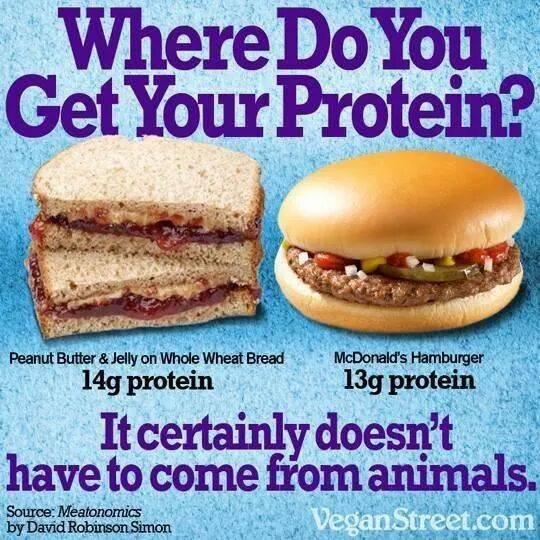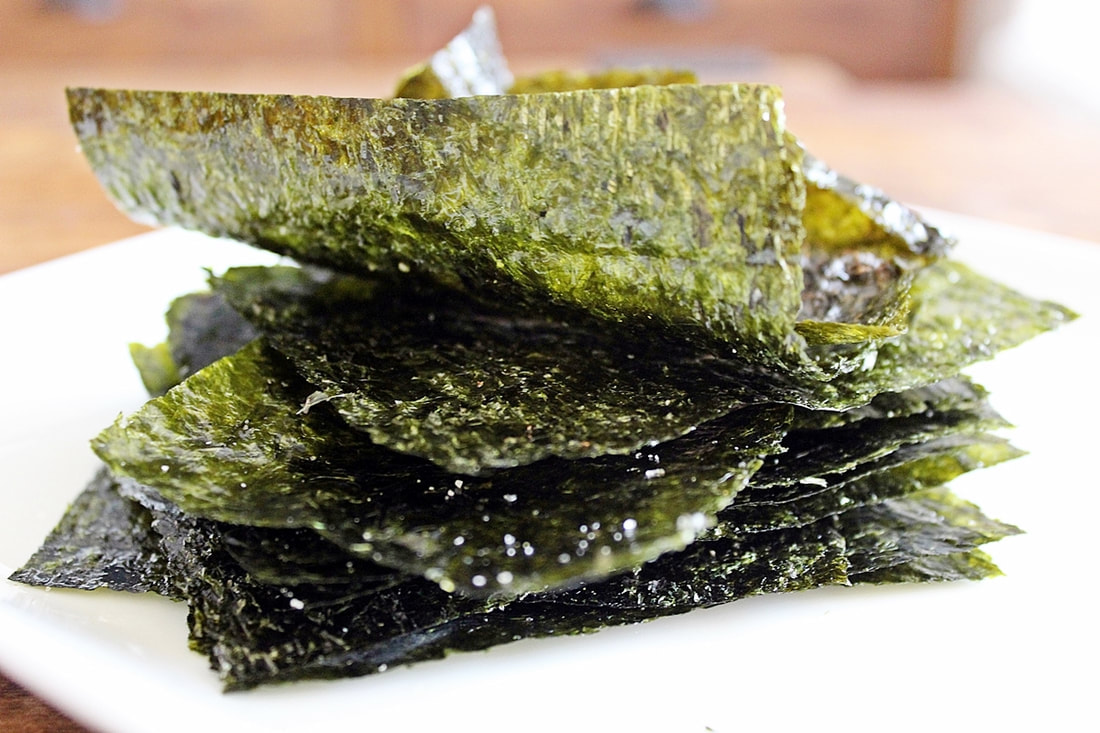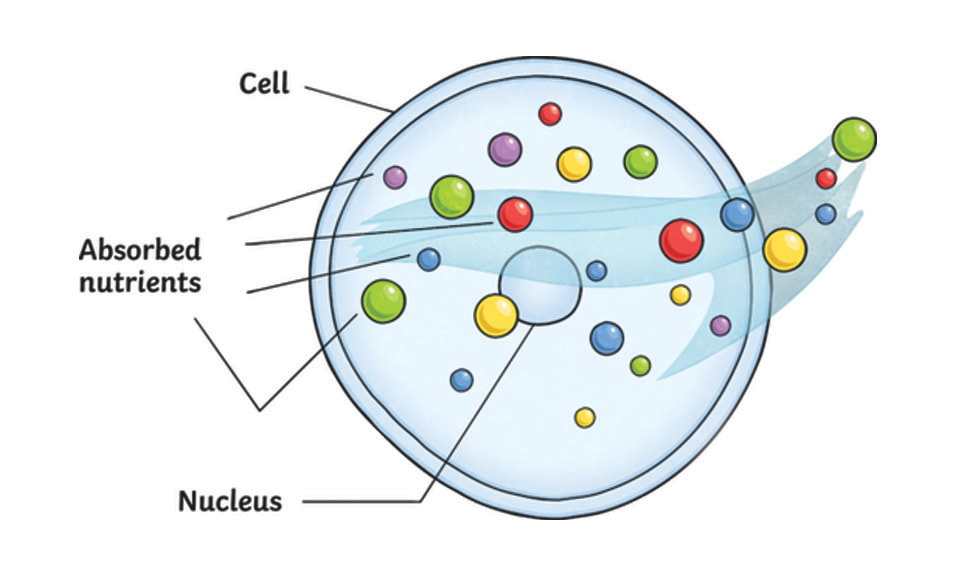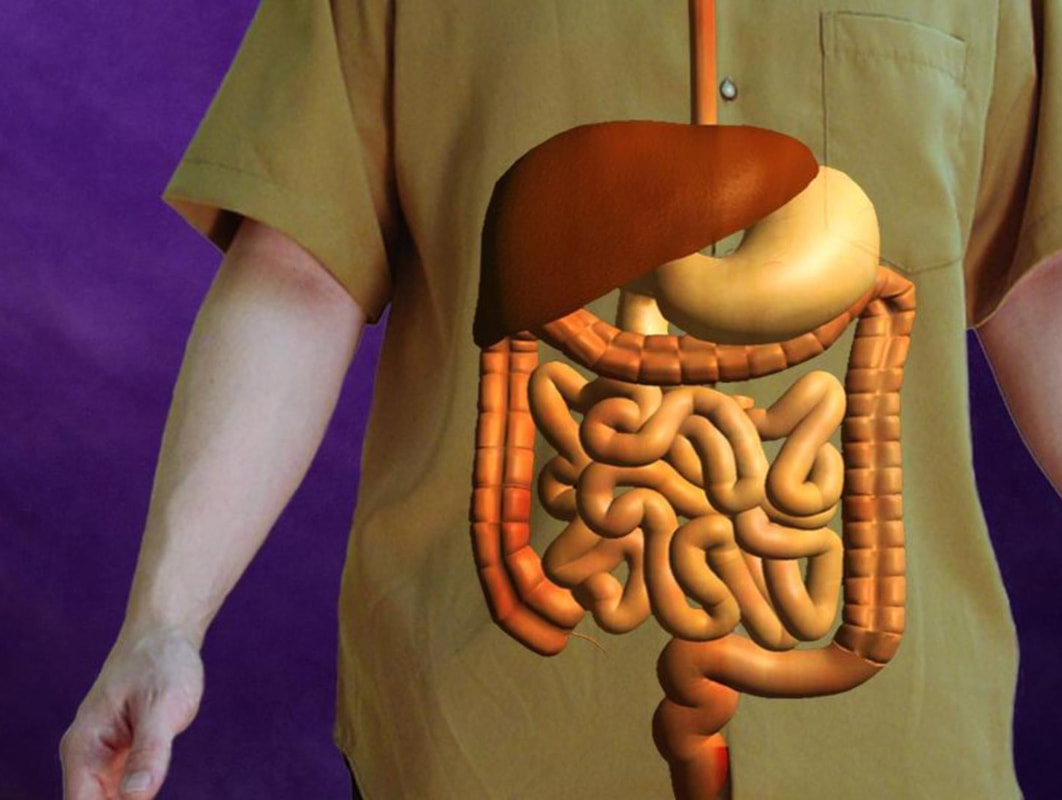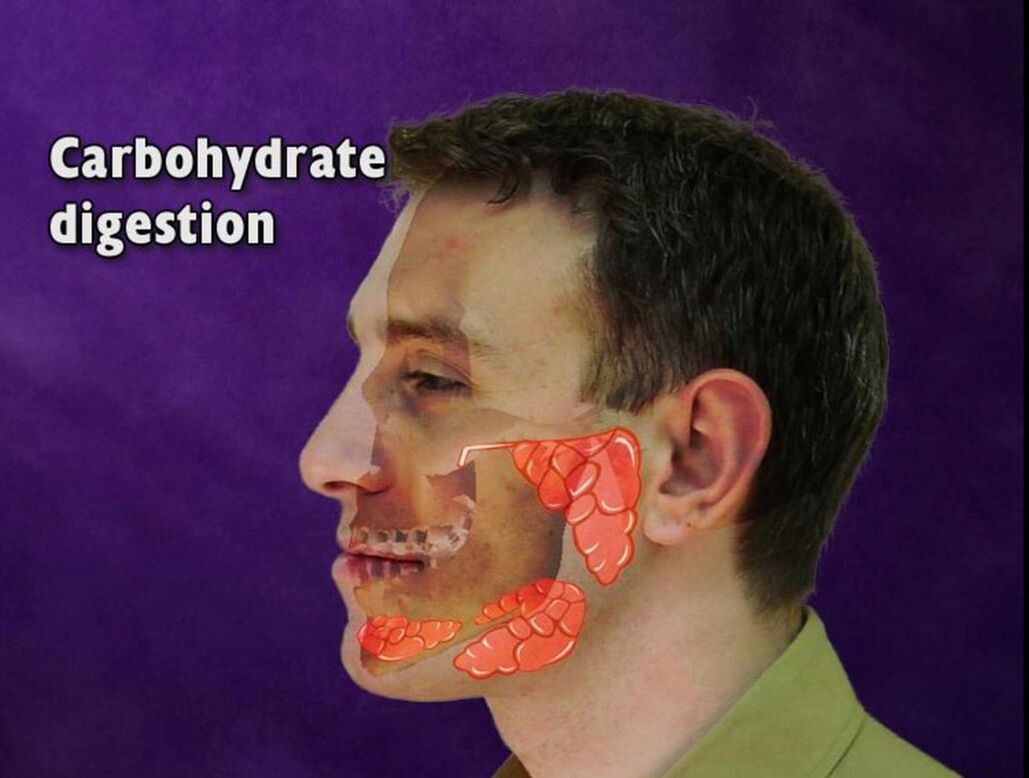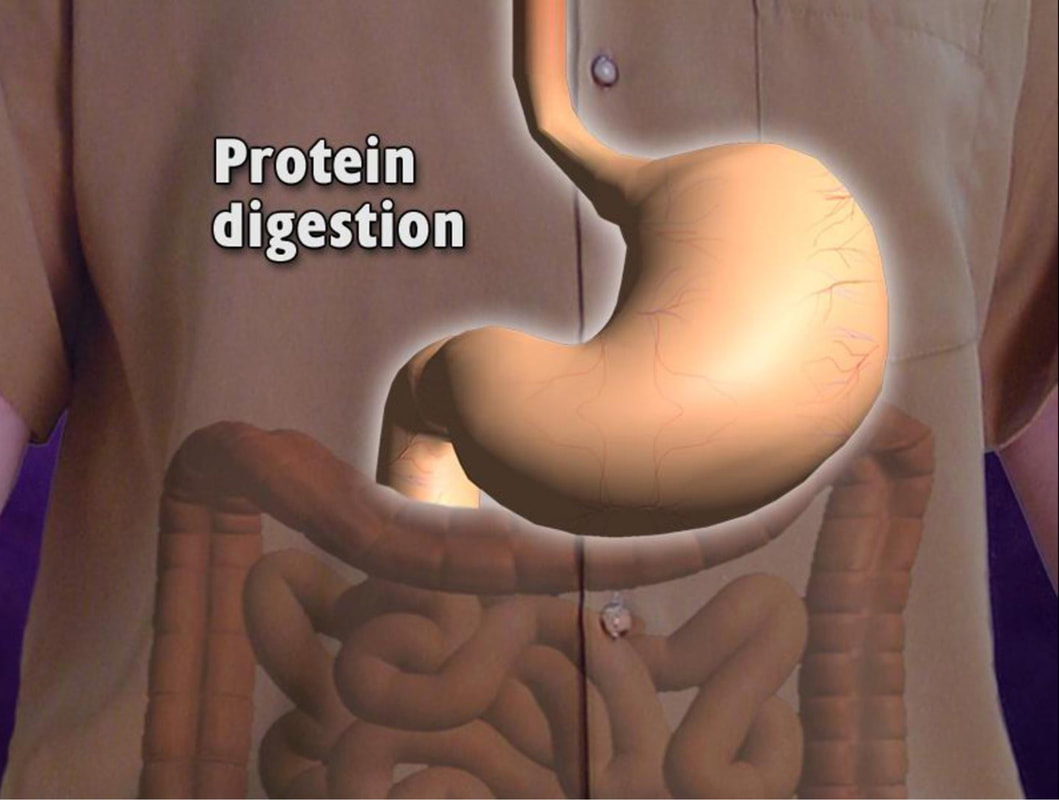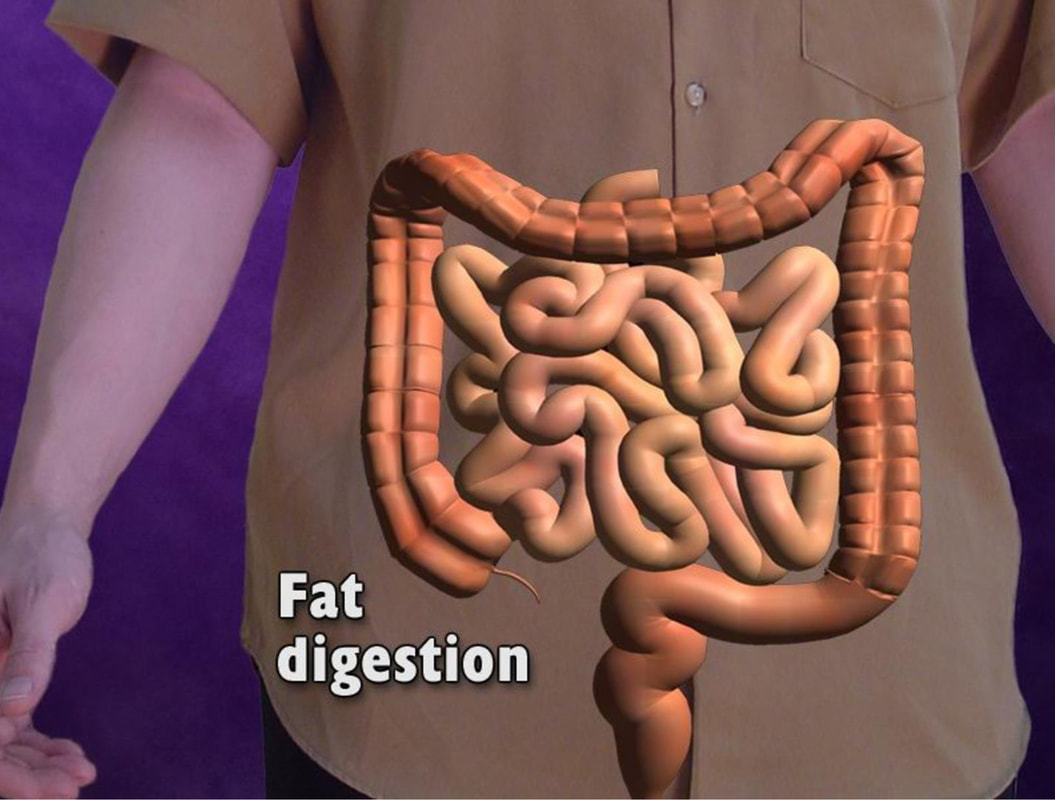MODULE 1B |
MISCONCEPTIONS ON PLANT-BASED DIET
Where do you get your____________. This question needs no explanation for anyone who has followed WFPB, vegetarian, or vegan diets at any point in their lives. Growing up in a society in which we're taught to drink milk to build strong bones, and a big chunk of meat is generally the center of the dinner plate, well-meaning family members and friends worry about the health of those that forego these items. However, the literature clearly shows well-planned vegan, and vegetarian diets provide all necessary nutrients. According to the Academy of Nutrition and Dietetics, "vegetarian, including total vegetarian or vegan, diets are healthful, nutritionally adequate, and may provide health benefits in the prevention and treatment of certain diseases."
The American Association of Pediatrics has also published a detailed manuscript regarding vegan diets in infants, children, and adolescents with details on how to make sure all necessary nutrients are included in sufficient amounts. A balanced, calorically appropriate diet based on a variety of whole foods, including vegetables, fruits, legumes, whole grains, nuts, and seeds, is also generally sufficient in macronutrients and micronutrients. In fact, it is easier to be sufficient in most of the nutrients of concern when following a WFPB diet than most typical diets. Notable exceptions are Vitamins B12 and D, which are common deficiencies among those eating nearly any type of diet. Selected details follow about nutrition questions likely to arise in courses or conversations promoting WFPB diets.
The American Association of Pediatrics has also published a detailed manuscript regarding vegan diets in infants, children, and adolescents with details on how to make sure all necessary nutrients are included in sufficient amounts. A balanced, calorically appropriate diet based on a variety of whole foods, including vegetables, fruits, legumes, whole grains, nuts, and seeds, is also generally sufficient in macronutrients and micronutrients. In fact, it is easier to be sufficient in most of the nutrients of concern when following a WFPB diet than most typical diets. Notable exceptions are Vitamins B12 and D, which are common deficiencies among those eating nearly any type of diet. Selected details follow about nutrition questions likely to arise in courses or conversations promoting WFPB diets.
Where do you get your Calcium?
Calcium is a key mineral involved in human health and is best known for its role in promoting bone health. The daily recommended dietary allowance (RDA) for calcium from the Food and Nutrition Board at the Institute of Medicine of the National Academies ranges from 1,000 mg to 1,300 mg, depending on age, for those aged four years and older. For many, calcium is thought to be synonymous with dairy, and to eschew dairy is to be deficient in calcium intake-not true! Taking a moment to think about milk intake, it makes sense that adults would not need dairy. Mammals, including humans, wean well before adulthood.
Therefore, it would be a poor design for humans to need lactation products from another mammal (such as dairy milk from cows) to survive, particularly in their adult years. There are plenty of other sources of calcium beyond dairy products in the diet. Plant foods that are good sources of calcium include tofu, tempeh, dark green vegetables, beans, almonds, and fortified plant-based milk. See the Amounts of Calcium in Dairy and Non-dairy Foods handout for more details. Many people, regardless of dairy consumption, need additional calcium for medical reasons. This can be eaten in the forms of naturally calcium-rich foods and fortified foods or taken as supplemental calcium. Calcium is incorporated into dairy products in a variety of ways, including (1) from the plants that cows eat, (2) calcium supplementation of cow feed, (3) or calcium fortification. Humans can either eat plants or take supplements just as well as cattle. Bonus: avoiding the intake of dairy and beef helps to limit greenhouse gases, deforestation, and other negative environmental impacts.
Calcium is a key mineral involved in human health and is best known for its role in promoting bone health. The daily recommended dietary allowance (RDA) for calcium from the Food and Nutrition Board at the Institute of Medicine of the National Academies ranges from 1,000 mg to 1,300 mg, depending on age, for those aged four years and older. For many, calcium is thought to be synonymous with dairy, and to eschew dairy is to be deficient in calcium intake-not true! Taking a moment to think about milk intake, it makes sense that adults would not need dairy. Mammals, including humans, wean well before adulthood.
Therefore, it would be a poor design for humans to need lactation products from another mammal (such as dairy milk from cows) to survive, particularly in their adult years. There are plenty of other sources of calcium beyond dairy products in the diet. Plant foods that are good sources of calcium include tofu, tempeh, dark green vegetables, beans, almonds, and fortified plant-based milk. See the Amounts of Calcium in Dairy and Non-dairy Foods handout for more details. Many people, regardless of dairy consumption, need additional calcium for medical reasons. This can be eaten in the forms of naturally calcium-rich foods and fortified foods or taken as supplemental calcium. Calcium is incorporated into dairy products in a variety of ways, including (1) from the plants that cows eat, (2) calcium supplementation of cow feed, (3) or calcium fortification. Humans can either eat plants or take supplements just as well as cattle. Bonus: avoiding the intake of dairy and beef helps to limit greenhouse gases, deforestation, and other negative environmental impacts.
|
Where do you get your protein?
From nearly all foods that we eat, is the answer. Contrary to popular belief, meat does not have a monopoly on protein. Those eating a calorie-sufficient, balanced, plant-based diet will get plenty of protein. Evidence-based food guidelines, such as Canada's Dietary Guidelines, published in January 2019, support moving toward more plant-based diets. Like the Canadian Food Guide, The American College of Lifestyle Medicine Whole-Food Plant-based diet highlights WFPB protein options. Those not eating plant-based diets generally consume far more protein than is necessary. |
People in the United States consume more total and animal-based protein per capita than any other country in the world. Although protein is an essential macronutrient, consuming excess protein does not lead to bigger muscles, better health, or improved weight-loss outcomes. Excess calories from protein or any other macronutrient will be stored as fat. The overconsumption of animal protein, in particular, may be harmful to the environment as well as one's health. Aim to make plant-based sources of protein a more significant part of the diet. Legumes, beans, tofu, and tempeh are all excellent plant-based sources of protein. Whole grains and vegetables contain some protein as well. For example, 100 Calories of broccoli contains 8 grams of protein. Recall that in an entirely WFPB diet, plant-based proteins are 100% of proteins consumed. In a predominantly WFPB diet, if including animal protein sources, it is still advisable from a health perspective to limit portion sizes and avoid red and processed meats. Of note, poultry and eggs also have the smallest environmental footprint of all animal protein sources, whereas beef and dairy have the largest.
Where do you get your Vitamin B12?
Vitamin B12 rich foods include meat, poultry, fish, seafood, dairy products, eggs, and fortified foods, such as breakfast cereals and most plant-based kinds of milk. Much like the Omega-3 fatty acids found in fish, Vitamin B12 is not made by animals but is concentrated in their tissues. Vitamin B12 is only made by bacteria and archaea; it is found in foods only through the interactions of these bacteria and archaea with animals and plants. Those following a WFPB diet can get vitamin B12 from fortified foods (e.g., most plant-based milk and cereals), nutritional yeast, or nori; otherwise, supplementation is needed. However, most people with Vitamin B12 deficiency are deficient due to non-dietary factors affecting absorption, such as autoimmune diseases, gastrointestinal diseases or surgeries, certain infections, certain drugs, and other causes. Anyone with a medical or dietary cause of Vitamin B12 deficiency needs supplementation.
Other nutrient sources will be discussed as you advance in this course.
Vitamin B12 rich foods include meat, poultry, fish, seafood, dairy products, eggs, and fortified foods, such as breakfast cereals and most plant-based kinds of milk. Much like the Omega-3 fatty acids found in fish, Vitamin B12 is not made by animals but is concentrated in their tissues. Vitamin B12 is only made by bacteria and archaea; it is found in foods only through the interactions of these bacteria and archaea with animals and plants. Those following a WFPB diet can get vitamin B12 from fortified foods (e.g., most plant-based milk and cereals), nutritional yeast, or nori; otherwise, supplementation is needed. However, most people with Vitamin B12 deficiency are deficient due to non-dietary factors affecting absorption, such as autoimmune diseases, gastrointestinal diseases or surgeries, certain infections, certain drugs, and other causes. Anyone with a medical or dietary cause of Vitamin B12 deficiency needs supplementation.
Other nutrient sources will be discussed as you advance in this course.
Vegan doesn't necessarily mean Healthy
It’s important to understand that one can adopt a vegan or vegetarian diet (perhaps for ethical reasons) and still end up eating very unhealthy foods. Merely avoiding animal foods is not the answer to good health. Studies have shown that vegetarians have a decreased risk of cancer, less obesity, and depending on the study you look at, possibly greater longevity as well. We would suggest that those studies track not just decreased consumption of unhealthy animal products, but also an increase in healthy plant-based foods in the diet – greater consumption of fruits and vegetables, whole grains, and beans, and other legumes, with all their corresponding healthy nutrients and micronutrients.
In the very large European Prospective Investigation into Cancer and Nutrition (or EPIC) study, four combined lifestyle behaviors were associated with an extra fourteen years of longevity – not smoking, only moderate consumption of alcohol, physical activity, and the consumption of at least five servings of fruits and vegetables every day.
Becoming a vegetarian should never be considered a ticker to health all by itself. Doughnuts, French fries, and banana splits are all vegetarian, and not one of them is going to make a top-ten health food list any time soon. Whole foods, plant-based diet stays away from refined grains, highly processed carbohydrates and sugars, and oils. In fact, there have even been studies, like the aforementioned EPIC study, that did not find a significant difference in the life expectancy between meat-eaters and vegetarians. But here’s a key to interpreting that data: the vegetarians in the EPIC study were eating only half the fiber of the Adventist vegetarians in Loma Linda. That means they were eating far fewer whole plant foods! The Loma Linda vegetarians were eating many more whole foods and plants and all the healthy fiber and nutrients that they are packed in. The results speak for themselves – an ordinary population, genetically diverse, with extraordinary health outcomes. As Garth Davis, MD, puts it, “If everyone ate like a Seventh-day Adventist, everyone would have the health of a Seventh-day Adventist.”
In the very large European Prospective Investigation into Cancer and Nutrition (or EPIC) study, four combined lifestyle behaviors were associated with an extra fourteen years of longevity – not smoking, only moderate consumption of alcohol, physical activity, and the consumption of at least five servings of fruits and vegetables every day.
Becoming a vegetarian should never be considered a ticker to health all by itself. Doughnuts, French fries, and banana splits are all vegetarian, and not one of them is going to make a top-ten health food list any time soon. Whole foods, plant-based diet stays away from refined grains, highly processed carbohydrates and sugars, and oils. In fact, there have even been studies, like the aforementioned EPIC study, that did not find a significant difference in the life expectancy between meat-eaters and vegetarians. But here’s a key to interpreting that data: the vegetarians in the EPIC study were eating only half the fiber of the Adventist vegetarians in Loma Linda. That means they were eating far fewer whole plant foods! The Loma Linda vegetarians were eating many more whole foods and plants and all the healthy fiber and nutrients that they are packed in. The results speak for themselves – an ordinary population, genetically diverse, with extraordinary health outcomes. As Garth Davis, MD, puts it, “If everyone ate like a Seventh-day Adventist, everyone would have the health of a Seventh-day Adventist.”
What Follows after the Swallows?
Have we ever thought of “What follows after the swallows?” Well, typically we only start to recall the kind of food we ate when something goes wrong. We would try to remember our food diary when our blood sugar went up or signs of high blood pressure are felt and mostly when we have stomach upset or allergies. Most people would commonly attribute some of their discomforts to food groups they ate. One best example is a high meat and crustacean intake which will expectedly increase uric acid build up in response to its exceedingly high purine content causing stiffness, pain and even swelling of joints commonly affecting the digits and ankles in less than twenty four hours after ingestion.
Very few are interested in carefully reading food labels, ingredients used, and the nutritional descriptions before buying them from the market and finally end up on our table for routine daily consumption. There seems to be a need for individuals to understand how food is processed and where does everything goes after every swallow. Perhaps it is a must for everyone to at least effectively equip themselves with basic knowledge on the digestion, absorption, elimination, and some biochemical processes in the body. After all, EATING is the most enjoyable necessity that everyone has, and everyone does.
We have to equally emphasize the manner how food is prepared, processed, and combined before it reaches our table. Every alteration we make changes the quality and quantity of substances that we may get from food. Is it really the high temperature that has something to do with the degradation of vitamins, minerals, enzymes, and other active substances like antioxidants? Or could it be the cutting, pressing, blending, or grinding? We may also be confused about the conflicting principles as to which varieties are safe to combine or taken first before another to maximize absorption. And how about the oxidative stress from each meal and what it does to our DNA? And even more interesting is the DYSBIOSIS that happens in the gut, which can be a potential cause of the several cascades of events in the development of the chronic disease.
DIGESTION, ABSORPTION, METABOLISM, and EXCRETION
Among all the organ systems that the human body has, the Digestive system is one of the busiest systems that seem to be working so hard than we ever thought. Anyone that is exposed to a certain stimulus, a very enticing smell of crispy fried chicken, for example, would already send the signal to the brain for it to send the command and prompt the digestive system to work. That single smell has a lot of messages to convey into the human body, and the response is felt almost immediately. We should start learning the basics of digestion, a process that the body does from sunrise to sunset.
People are now getting a larger grasp of food significance and eating more responsibly. Food supplies the necessary nutrients to sustain every part of the human body for energy, maintenance, and growth. Each food particles are composed of complex substances that must be broken down to simpler forms that the cells can use.
Among all the organ systems that the human body has, the Digestive system is one of the busiest systems that seem to be working so hard than we ever thought. Anyone that is exposed to a certain stimulus, a very enticing smell of crispy fried chicken, for example, would already send the signal to the brain for it to send the command and prompt the digestive system to work. That single smell has a lot of messages to convey into the human body, and the response is felt almost immediately. We should start learning the basics of digestion, a process that the body does from sunrise to sunset.
People are now getting a larger grasp of food significance and eating more responsibly. Food supplies the necessary nutrients to sustain every part of the human body for energy, maintenance, and growth. Each food particles are composed of complex substances that must be broken down to simpler forms that the cells can use.
|
Everyone should never forget that the CELL is the ultimate destination of the nutrients found in food. It would undergo a lot of tedious courses of action, including digestion, absorption, and metabolism that are the three interrelated processes that act on food in many different levels to prepare it for use by the body. Then the last process is excretion, where elimination of undigestible or unusable substances takes place.
|
Among the many processes and chemical interactions happening in the human body, FOOD contributes one of the largest roles. We have to remember that anything we put inside our mouth may eventually end up in our blood vessels and carried out to trillions of cells for utilization. So whether we ate the healthy stuff, the greases, or the toxins, they may all ooze down to the blood for cell uptake, and there’s no way to take them back out of the system.
Digestion is the First step in preparing food for use by the cells. It is the process by which food is mechanically broken down into smaller particles along the stretch of the gastrointestinal tract. These end products of digestion would move from the gastrointestinal tract into the blood or lymphatic system, which is a process called absorption.
Digestion is the First step in preparing food for use by the cells. It is the process by which food is mechanically broken down into smaller particles along the stretch of the gastrointestinal tract. These end products of digestion would move from the gastrointestinal tract into the blood or lymphatic system, which is a process called absorption.
Digestion takes place in the alimentary canal and the accessory organs. The alimentary canal is a long, hollow, muscular tube that extends through the body from the mouth and ends at the anus. It includes the oral cavity, pharynx, esophagus, stomach, small intestine, and large intestine. Muscle rings, called sphincters, are separate segments of the alimentary canal. They act as valves to control the passage of food. When the muscles contract, the passageway closes; when the muscles relax, the passageway opens.
